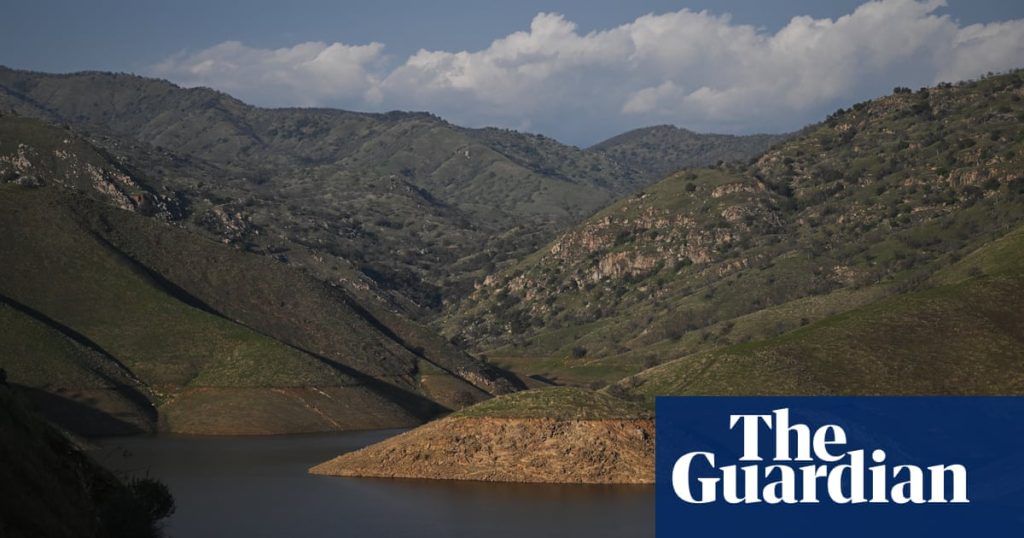Unusually warm springtime temperatures have contributed to rapid reductions in snowpacks across the western US that rival the fastest rates on record, increasing concerns around wildfire season.
The rapid snowmelt, in addition to reduced staffing and budget constraints initiated by the Trump administration, has set the stage for a particularly dangerous season across the west, according to an analysis of publicly available data by the Guardian and interviews with experts in the region.
The National Weather Service has issued flash flood warnings across the south-west this week as warm weather ushered in rainfall at higher than usual elevations, worsening the runoff. In several lower-elevation locations within the headwaters of the Colorado River, mountain terrain is already snow-free – the earliest complete-melting of snowpack on record.
“Such rapid melt rates are not normal,” according to a special update by the National Oceanic and Atmospheric Administration (Noaa) last month.
All western states now have below-normal snowpacks, including California, where this season’s snowfall was above average. About one-third of the western US is now in ‘severe’ drought or worse, the highest fraction in more than two years.
This summer’s seasonal wildfire forecast calls for a continuation of hot and dry weather, especially in the Pacific north-west. Experts now fear that quickly depleting mountains snows will limit summertime water availability in streams and rivers throughout the west, and may kick off a potential feedback loop that could intensify and expand the current drought.
In addition to the ominous environmental conditions, federal fire crews are short-staffed due to accelerated retirements and staff reductions taking place across the myriad organizations that make up the nation’s unified wildland firefighting force.
Off-season training has been hampered by an across-the-board spending freeze instituted by Donald Trump and Elon Musk’s “department of government efficiency”. Some crews have reported constraints even on basic off-season necessities, like the inability to buy fuel for chainsaws during training exercises due to Doge setting purchase limits to $1.
The reduced readiness state means that firefighters and their support teams, called incident management teams, could be quickly overwhelmed.
“The thing that has me really worried is that I don’t think we’re going to have enough incident management teams to handle all the large fires that are going to pop this year,” said Jim Whittington, a retired federal wildfire public affairs officer who is now a faculty member at Oregon State University.
Incident management teams – which include skilled support staff such as meteorologists, cartographers and supply chain experts – are deployed on short notice whenever a prolonged and complex firefight emerges. Whittington and his colleagues estimate that cuts by the Trump administration mean federal agencies will be able to field about 15-20% fewer incident management teams this summer, even amid an outsized fire threat.
At the regional level, Washington cut its wildfire prevention spending in half amid a state budget crisis, raising concern for public safety this summer. Oregon officials held a news conference last week to say that cuts to EPA, USFS and NWS staff will leave their state less prepared for this year’s fires.
Given that fire season is already on a record-setting pace in the prairie provinces of Canada, Whittington also expects limited support from international partners, furthering the burden for US fire crews.
Our US morning briefing breaks down the key stories of the day, telling you what’s happening and why it matters
Privacy Notice: Newsletters may contain info about charities, online ads, and content funded by outside parties. For more information see our Privacy Policy. We use Google reCaptcha to protect our website and the Google Privacy Policy and Terms of Service apply.
after newsletter promotion
“This may be the first year in memory where we have Canada and the US having overextended potential at the same time, and so I don’t expect there to be a lot of help from up north,” said Whittington. “That’s going to create some cumulative fatigue issues as we head into late summer.”
The National Weather Service itself is also dealing with its own staffing constraints, with forecast offices in Sacramento and Hanford, California, recently curtailing long-standing around-the-clock services. Some meteorologists receive special training to be able to forecast weather conditions around wildfires and are loaned to incident management teams as needed. Given this year’s staffing constraints, however, they may need to stay at their home offices.
The Trump administration’s Federal Emergency Management Agency (Fema) is undergoing a comprehensive review.
The rapid onset of summer-like conditions is a clear symptom of climate crisis, and has been occurring more frequently in the western US in recent years.
There are more than a million homes in the wildland-urban interface in Washington state – about the same as in southern California – and the number is growing quickly.
“There’s a good chance that the Wildland Fire Service will not be able to meet the expectations that we’ve created in the past,” said Whittington. “I know they’re going to bust their ass to try.”
“I think everybody who lives in fire country needs to have a really good plan this year and have some contingencies off those plans because you never can tell when you’re going to be in the thick of it, and there just may not be the resources there that you expect there to be.”

